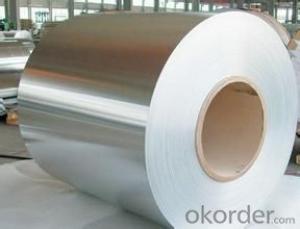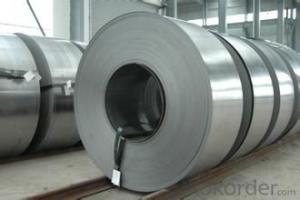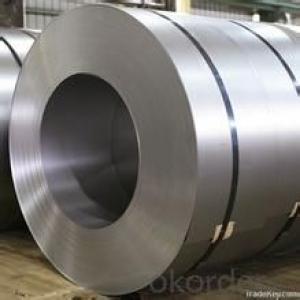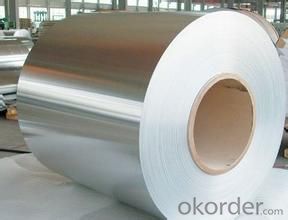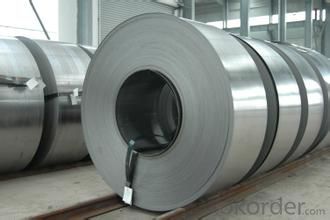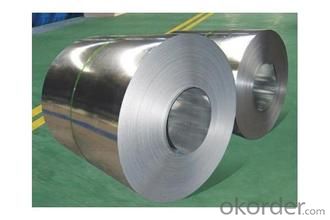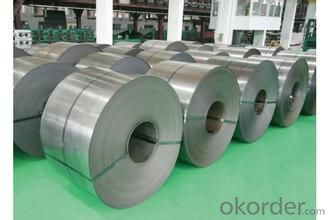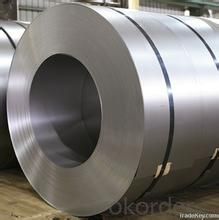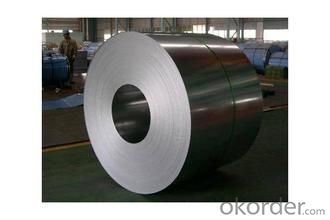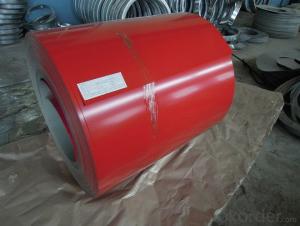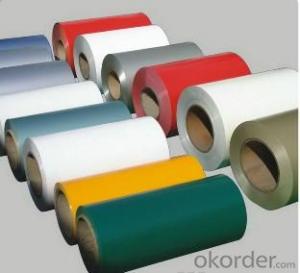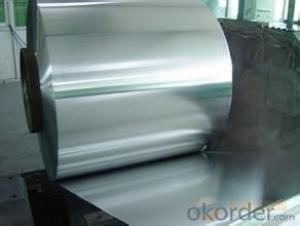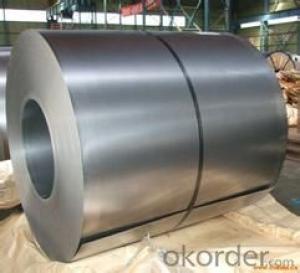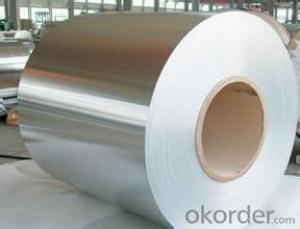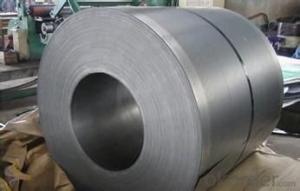Excellent Cold rolled Steel Coil/Sheet -SPCCT-SB
- Loading Port:
- Tianjin
- Payment Terms:
- TT OR LC
- Min Order Qty:
- 100 m.t.
- Supply Capability:
- 5000000 m.t./month
OKorder Service Pledge
OKorder Financial Service
You Might Also Like
Specification:
COLD ROLLED STEEL | |
Thicknenss | 0.10mm-4.00mm |
Width | 600mm-2000mm |
Sheets length | 1200-6000mm |
Coil inner diameter | 508-610mm |
Surface treatement | matt finish/bright finish,oiling/dry, bright anneal/black anneal |
Coil weight | 3-5t |
Application:
1. Refrigerators, cabinets, power distribution baords and drums.
2. Automobile floor and roof panels.
3. Automobile fenders and quarter panels
4. Automobile fenders and quarter panels
Advantage
1. High Quality SurfaceFinish
2. High Dimensional Precision
3. Excellent mechanicalproperty
Package & Delivery
Package details: Standardseaworthy packing for international delivery.
Delivery: According to theexact quantity of your order.
Images:
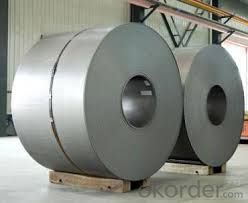
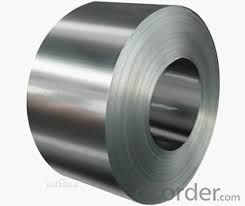
Quality of the goods could be guaranteed. The finished product has a variety of excellent capabilities, such as continuous rolling, degreasing, annealing, skin pass, slitting and cut to length line etc. Along with it many rocessing capability and smooth, flat surface. It’s widely used in outdoor and interior decoration, furnishing.
- Q: I want to know because I'm going to Hershey Park on Wednesday and Steel Force looks about the same size, so, I wanted to know. It's not that Steel Force is too big for me.
- steel force breaks the 200ft mark and is a steel out and back roller coaster. Tidal force is a water ride that is about 100 ft tall. If you can do Steel Force then you should be able to handle anything at Hersheypark. the on;y ride they have bigger is the Kissing Tower
- Q: What are the different types of steel coil coatings for corrosion resistance?
- There are several types of steel coil coatings available for corrosion resistance, including galvanized coatings, galvannealed coatings, and organic coatings.
- Q: How are steel coils used in the production of steel springs?
- Steel coils are used in the production of steel springs by being cut and shaped into the desired size and shape of the spring. The coils are then heated and tempered to improve their strength and flexibility. The steel coils provide the raw material necessary for creating durable and reliable steel springs used in various applications such as automotive, furniture, and industrial machinery.
- Q: it isn't a SIGG water bottle or any other brand, as it's from thingsengraved what I'm wondering is, is this just as good as a SIGG water bottle, or is there any difference?
- Stainless steel is one of the best products to use for anything associated with food. It can be sterilized, it won't stain or absorb odors, it can be recycled and much of it is made of recycled material. If you take care of it, it can last a lifetime. We get hung up on brand names, you should look at the material it is made of. Which is a quality grade of stainless steel. I couldn't find the grade on the Sigg site, but I would think it would be the same or very similar. So, all that to say, this one seems to be as good as a Sigg.
- Q: How are steel coils used in the production of medical equipment?
- Steel coils are used in the production of medical equipment in a variety of ways. One common use is in the manufacturing of surgical instruments. Many surgical instruments, such as scalpels, forceps, and clamps, require a sharp and durable cutting edge. Steel coils are used to create these cutting edges, as they can be easily shaped, hardened, and sharpened to ensure precision and longevity. Additionally, steel coils are often used in the production of medical devices such as braces, orthopedic implants, and prosthetics. These devices require materials with high strength and durability to support and stabilize the body. Steel coils can be formed into different shapes and sizes to meet the specific needs of patients, providing the necessary support and functionality. Furthermore, steel coils are used in the production of medical equipment such as MRI machines and X-ray systems. These machines require strong and reliable components to ensure accurate imaging and diagnostics. Steel coils are used in the construction of these machines to provide stability and structural support, allowing for precise and high-quality imaging. In summary, steel coils play a crucial role in the production of medical equipment by providing strength, durability, and versatility. From surgical instruments to orthopedic devices and diagnostic machines, steel coils are utilized to create reliable and high-performing medical equipment that ultimately improves patient care and outcomes.
- Q: Is Stainless steel called that because.....a. Its stains lessORb. Its virtually stainless (it can't stain).Lol do you know the correct answer?????
- Stainless Steel is named that because when compared to untreated steel it is virtually stainless. It is virtually stainless, and harbors very little germs and bacteria. That is why it has been the standard in the food industry for years.
- Q: What are the common methods of protecting steel coils from corrosion during storage?
- To safeguard steel coils from corrosion during storage, there are multiple commonly employed techniques. These methods aim to shield the steel coils from moisture and other environmental factors that could trigger corrosion. 1. VCI (Volatile Corrosion Inhibitor) Packaging: VCI packaging is extensively utilized for steel coil protection. It incorporates VCI materials into the packaging, such as plastic bags or films. These materials emit a vapor that forms a protective layer on the surface of the steel coils, effectively preventing the intrusion of moisture and corrosive agents. 2. Oil Coating: Another widely adopted approach involves applying a thin layer of oil onto the steel coil surface. This oil acts as a barrier, obstructing the contact between the steel and moisture or oxygen. It proves particularly effective for long-term storage or transportation situations. 3. Desiccants: Silica gel packets or similar desiccants can be placed inside the packaging to absorb any trapped moisture. By reducing humidity levels within the packaging, the risk of corrosion is minimized. This method is often combined with VCI packaging or oil coating. 4. Proper Ventilation: Adequate ventilation is crucial to prevent moisture buildup around the steel coils during storage. By facilitating the free circulation of air, humidity levels are reduced, and the formation of condensation, which can lead to corrosion, is prevented. 5. Controlled Environment: Storing steel coils in a controlled environment is an effective corrosion prevention measure. This entails maintaining constant temperature and humidity levels that are unfavorable for corrosion. Temperature and humidity control can be achieved using air conditioning or dehumidification systems. It should be noted that the choice of specific protection methods or combinations thereof depends on various factors, including storage duration, environmental conditions, and specific steel coil requirements. Regular inspections and maintenance are also vital to ensure ongoing corrosion protection.
- Q: What are the different types of steel coil handling attachments?
- Some of the different types of steel coil handling attachments include coil lifters, coil grabs, coil hooks, coil tongs, and coil C-hooks. These attachments are designed to safely lift, transport, and manipulate steel coils of various sizes and weights.
- Q: Does SA use its own iron ore to produce steel for construction or do we rely on imports?
- Then people like Bull tell you the country is going down yet Lakshmi and Mark Mobius(read last week's FM) show confidence in SA. Sieman, IBM and CNBC are investing millions in the country. Now who do believe?
- Q: Is there much difference? Which is better? Are they equally safe? Is it just personal preference? Can you reccomend a good comfortable steel composite toe boot?
- steel toe boots are just that a piece of steel fitted over the toes, composite toe boots use other materials that are just as hard BUT they do not have the connectivity levels as steel. if you are working in a cold climate steel toes will freeze them toes right off, also electrical environments. my advice get a good pair of composite ones, and you get what you pay for, its worth the investment. more than you could ever imagine. proper foot support. helps legs cramps, back pain etc...
Send your message to us
Excellent Cold rolled Steel Coil/Sheet -SPCCT-SB
- Loading Port:
- Tianjin
- Payment Terms:
- TT OR LC
- Min Order Qty:
- 100 m.t.
- Supply Capability:
- 5000000 m.t./month
OKorder Service Pledge
OKorder Financial Service
Similar products
Hot products
Hot Searches
Related keywords
